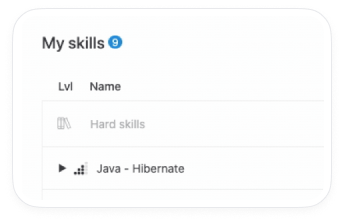Labor market 2030 and beyond: What companies should know and how they can future-proof their operations
Table of contents
- The changing nature of work and labor market expectations
- Growth of employment in the service and knowledge sectors
- Rise of demand for new skills and competencies to support business re-engineering
- Impact of labor market trends and how companies can prepare
- Is that all you need to know to shape the future of work through 2030?
Today’s labor market disruptions and economic transformation are changing the structure of the future labor market. But what if there are more factors causing these structural changes? We review the latest shifts in the labor market in our new blog post.
The changing nature of work and labor market expectations
Industrialization was mainly driven by increased productivity, the use of science and technology, employee qualifications, and the efficient organization of work. Eventually, the increased use of new technology led to fears that societies would run out of unskilled labor and that only highly qualified workers would be part of the job market.
The megatrends that became a part of the job market in the past were:
- Decrease in working time and a tendency towards hybrid working time
- A more proactive approach by employers in the learning and development of their workforce
- Persistent gaps between labor supply and demand (unemployment) and between available and required skills
- Changes in values toward work
Growth of employment in the service and knowledge sectors
According to the World Trade Report 2019, “The services share of world trade has grown from just 9 percent in 1970 to over 20 percent today – and this report forecasts that services could account for up to one-third of world trade by 2040.This would represent a 50 percent increase in the share of services in global trade in just two decades.”
Service sectors including education, transportation, and entertainment are the most booming in terms of growth and employment. Moreover, knowledge-intensive sectors have been expanding their employment more rapidly than the rest of the economy. On the other hand, losses in the job market have occurred mainly in low-tech labor-intensive manufacturing.
Rise of demand for new skills and competencies to support business re-engineering
In the past, businesses implemented new technologies to improve productivity by reducing costs, improving quality, and shortening innovation cycles. In contrast to previous modernization activities, today’s strategies aren’t only focused on new techniques but also on systematically restructuring the whole value-adding process.
Restructuring of the business processes using new technologies has led to changing demands on the competencies and skills of workers, who need to take over a wider variety of tasks and greater responsibilities.
Although several studies indicate that new technologies and work organizations can’t be held responsible for high unemployment in the job market, they also emphasize substantial job displacement, uncertainty, job insecurity, and ever-growing requirements imposed on workers.
Impact of labor market trends and how companies can prepare
Skills mismatch
A skills mismatch occurs when an employee has competencies that either exceed or are insufficient for their job tasks. It leaves workers uncertain about their income and career development. Thus, companies face lower productivity, compromised work quality, and lost potential profit.
According to a BCG report, by 2030, more than 1.4 billion people will have competencies that either exceed or are insufficient for their activities in the job market.
Solution
Ways to address a skills mismatch or shortage:
- Offer training to existing employees so they can fill current gaps.
- Open up apprenticeships, co-op work placements, and internships, which can help cultivate the next generation of skilled workers.
- Fill a skills shortage by hiring gig economy workers to fill unexpected gaps in operations quickly and cost-effectively.
Tip from HRForecast: Check out key statistics and trends to help you get started with an employee development plan.
Flexible work arrangement trend
At first glance, flexible work arrangements appeared to resolve the problem of work-life balance. However, after taking off the rose-tinted spectacles, there are some disadvantages to it, including:
- Stress due to increased work hours
- Alienation and disassociation with the organization
- Weaker relationships due to impersonal virtual teams
Solution
HR managers will need to address these issues that arise with implementing flexible work arrangements:
- Carry out detailed forecasting of work volumes, and plan how employers that allow for flexible work will get their work done.
- Identify and resolve any issues among colleagues and teams who are users and non-users of the flexible work arrangement, as colleagues may feel left out, especially if some employees have access to flexible work options while others do not.
Tip from HRForecast: Identify skills gaps in your organization with the help of this guide.
Skill needs in information and knowledge-based societies
There seems to be a growing separation between performing practical work and information processing work: between manual work and intellectual work. The information and knowledge-based economy are centered on big data. Analyzing substantial amounts of data efficiently is a necessity for logistics professionals at many levels.
Solution
HR leaders should hire knowledge workers from the job market with a high level of education. HR leaders must recognize the formal knowledge obtained upon leaving the initial education (college/university) system. They can then help new hires obtain further required competencies to be designated as knowledge workers through experience, training, or more informal methods that are well-documented in the literature on informal or non-formal learning.
Tip from HRForecast: Explore the opportunity to slowly shift the skills available in your organization towards a future goal.
Flexible and transferable skills
Capital equipment in an organization refers to a tangible equipment with a shelf life of a year or more and costs $5,000 or more per unit.
As capital equipment tends to become outdated at faster rate, labor market workers must be able to cope rapidly with various equipment updates. Moreover, workers must be able to take the initiative to adapt to increasingly varying demands of skills needed in the job market. To overcome these challenges, employees require a high degree of versatility.
Solution
HR leaders should help employees develop multiple skills, from physical abilities to cognitive skills (analytical and synthetic reasoning, numerical and verbal abilities) and interpersonal skills (leadership, supervision, teamwork).
Given the rapid pace of technological and economic change, employees may be forced into changing activities and jobs several times during their working life. A solid educational and training background will help them adapt to new requirements.
Tip from HRForecast: Check out the hard and soft skills needed to develop future employees.
Impacts of new technologies on the labor market
Given the impacts of technology and innovation on human resources, organizations give priority to multiple hard and soft skills, training, experience, and the ability to work in complex situations. There is a direct relationship between digital upskilling and technical change.
The new production conditions, group working, and reorganization of work may increase the autonomy and expertise of workers. However, problems may arise when remuneration doesn’t match expected performance and qualifications.
Solution
Working with computer-based technologies requires multiple skills and competencies. Thus, an emerging requirement for work in a computer-based environment includes skills and competencies such as mechanical and electrical engineering, electronics, data processing, and industrial engineering.
Key competencies and skills are increasingly crucial for the modernization process. Together with personal skills and specific job-related skills, these competencies align group-oriented work and process regulation.
Tip from HRForecast: Explore IT skills that will be in demand in the future.
Training for experience-led work
Technology often replaces human work with technical systems, including in various regulatory and control functions. However, there are limits to process automation. Meanwhile, the human element becomes increasingly essential for the smooth running of technical systems.
Solution
The importance of human work is growing because concrete technological processes cannot be fully predetermined in practice. High-tech processes still need human intervention to ensure the quality of materials and processes, the condition of technical equipment, and external influences (power cuts, goods delivery, etc.).
The required qualifications to prevent and manage any unexpected outcomes are training through experience-led work. Such training includes skills enhancement such as associative reasoning and a feeling for technical equipment. For example, an efficient reaction to technical malfunctions requires an excellent capacity to understand and communicate with peers the reason for the breakdown.
These are competencies that are typically acquired only through long work experience.
Tip from HRForecast: Read more about how technology will impact your workforce in the future.
Values assigned to work
In contrast to the utopias of work and society in the past, today there seem to be tendencies that erode the traditional cultural patterns of an individual’s lifestyle and the value assigned to work. What seems to be changing are the traditional values skilled workers assign to work, patterns of motivation, and life orientations.
Solution
Encouraged by increasing salaries and wealth, social security, and opportunities for education and training, employees have changed their work expectations. Therefore, e, HR leaders must focus on adapting to the new conditions, recognizing employees’ work, ensuring they achieve gratification from their work, enabling self-determination, and helping employees work in demanding future-oriented jobs.
Tip from HRForecast: Find out more about how the ethical values of your organization impact your workforce.
Is that all you need to know to shape the future of work through 2030?
Absolutely not! When it comes to people management in the future, there is no such thing as “definite” information. People, their world, and their work in the world will keep evolving. While it’s impossible to write down all the future trends in one blog post, there is a way to stay up to date with all HR-related news. Subscribe to our newsletter to stay ahead of the trends that will affect your future workforce.
Stay up to date with our newsletter
Every month, we’ll send you a curated newsletter with our updates and the latest industry news.


























 info@hrforecast.de
info@hrforecast.de
 +49 89 215384810
+49 89 215384810






